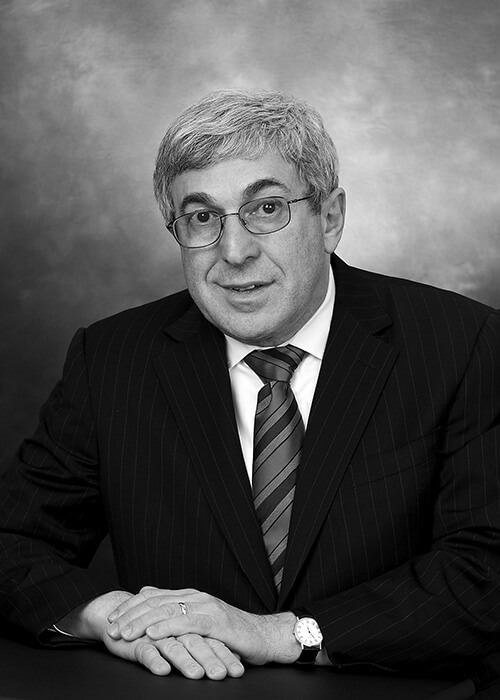2018’s 32 Most Influential People in Dentistry
Who’s up? Who’s down? Who’s out entirely? (One very notable figure, to be sure.) Incisal Edge’s second annual look at our industry’s primary forces to be reckoned with—the doctors, executives, lobbyists, educators, innovators and, er, Miss Universes doing more than anyone to shape dentistry today.
By Elizabeth Dilts, Mellanie Perez, Joshua Coe and Shannon Bowen
WHEN INCISAL EDGE PUBLISHED its inaugural list of dentistry’s most influential people last year, we noted that measuring something as nebulous as “influence” is like trying to measure the depth of a parent’s love, or the quality of a scenic view. It’s an inherently subjective task.
As we did a year ago, in naming the 32 Most Influential People in Dentistry for 2018—one for every tooth, of course—we took a variety of metrics into consideration.
Dollars are of course crucial: company revenue, market capitalization, public or private budget controlled. We then considered the heft different organizations can bring to bear. If a given group is influential, then its leader is too, even if he or she is a low-key operator. (A great deal of influence can be exerted behind the scenes, after all.) Finally, we attempted to quantify “size of voice”—how much pull an individual has through his or her speaking, writing, research, even social-media activities.
It’s an imprecise exercise, to be sure. A lot of the final decision comes down to Justice Potter Stewart’s famous standard: You know it when you see it. And you’ll see plenty of it—dental influence, that is, not what Stewart was talking about—in the pages ahead. Disagree? Think we left someone obvious off? We’d love to hear from you.
We want to spark a discussion every year with each new look at the state of dental influence. This multibillion-dollar industry to which we’re all so proud to belong is ever-changing, after all. It only stands to reason that its most notable influencers are, too.
1. The Globalist
STANLEY BERGMAN (last year: 4)
Chairman and CEO, Henry Schein Melville, New York
Taking the top spot this year is an industry icon who, among his many other laurels, was named 2017 CEO of the Year by Chief Executive magazine—an honor previously bestowed upon Disney’s Bob Iger, FedEx’s Fred Smith and Citigroup’s Sandy Weill, among other luminaries. Chief Executive cited Bergman’s “sustained high performance in both business goals and organizational values,” the latter a nod to his impassioned advocacy for the rights of immigrants, the impoverished and children worldwide.
Having spent 42 years at Henry Schein, Bergman has been its CEO for nearly three decades. The son of parents who fled Nazi Germany and himself an immigrant who left apartheid South Africa, Bergman has presided over his company’s ascension to a global dental fixture with unmatched scale and know-how.
Henry Schein’s charitable arm has donated millions of dollars’ worth of dental and other medical supplies to serve refugees overseas as well as needy Americans, and Bergman used his CEO of the Year acceptance speech to call on his fellow executives to ensure that society’s benefits reach everyone. “We have an obligation . . . to do a better job expanding these benefits to others,” he said. “Progress is great, [but] we cannot leave people behind.”
Facing a decline in its performance against the S&P 500 over the past year, meanwhile, the Long Island–based company doubled down on its practice-management software products and dental capital equipment, areas in which it’s known for its expertise. (Last year was the first time in four years Schein hadn’t outpaced the S&P.)
Yet at an age when most CEOs are thinking about riding off quietly into the sunset, Bergman, 68, has recently announced several bold moves that will reboot Henry Schein for the future. In the coming months, the company will enter a joint venture with Internet Brands that combines Schein’s considerable software division (Dentrix, TechCentral and others) with e-services such as DemandForce and Officite to form Henry Schein One (whose projected annual revenue will be $400 million); it’ll also spin off Schein’s animal-health division in a merger with an e-commerce company to create a stand-alone public company with some $3.6 billion in sales—and put over $1 billion in tax-free cash into the parent company’s coffers. Turning one large publicly traded health-care distributor into three smaller, more nimble companies—that’s influential.
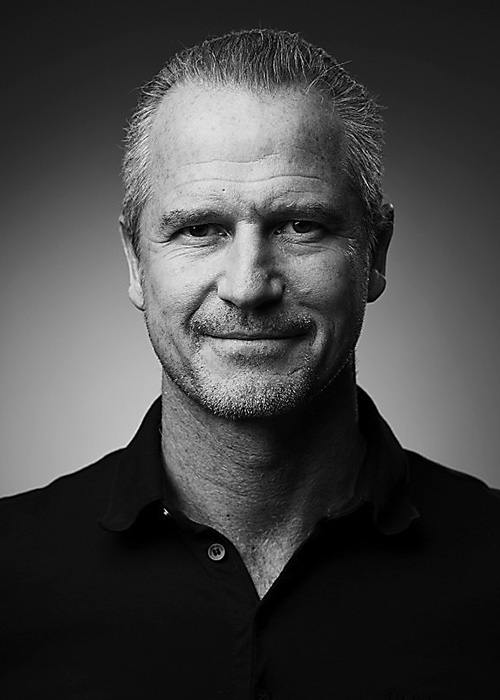 2. Mr. Everything
2. Mr. Everything
MARCO GADOLA (last year: 7)
CEO, Straumann
Basel, Switzerland
Gadola, 54, took over as CEO of Straumann, the Basel, Switzerland–based maker of dental implants, CAD/CAM prosthetics, biomaterials, digital restorative equipment and much more, in early 2013. (Years earlier he had been Straumann’s chief financial officer; before claiming the top job there, he had most recently held the CFO position at freight-logistics company Panalpina.)
Since his appointment, Straumann’s market capitalization has gone in one steady direction: up, up, up like the Matterhorn, fivefold in just over five years. Investors have cheered Gadola’s bullish moves into digital technology and its recent $150 million acquisition of Texas-based ClearCorrect, which serves notice to the crew at Align Technology (see page 28) that he has them in his sights. (Straumann has also acquired a 38 percent stake in Geniova, a Spain-based manufacturer of what Gadola calls “an innovative hybrid aligner solution that combines the strength of fixed orthodontic appliances with the flexibility of removable clear aligners.”)
“Our continuing strong growth and significant outperformance confirm that we are executing an appropriate strategy,” Gadola said in his note to shareholders in Straumann’s 2017 annual report. “We have set the stage for future growth by entering new markets and the attractive field of esthetic dentistry, and we have responded to market and technology trends by building digital capabilities and by devoting resources to the [dental-support-organization] segment.”
Straumann’s goods are sold in more than 100 countries, with revenue growth worldwide on the ascent thanks in part to implants, its primary product class. Last year, Gadola says, “was a landmark. We launched multiple innovative products, increased our scope, reach, technology capabilities and production capacity.” The numbers bear him out; Straumann’s net revenue grew by 21.2 percent in 2017, and overall growth was its highest in a decade. The company’s market encompasses the world—it even opened a subsidiary in Iran last year—but Gadola notes that America is naturally a primary driver of future revenue gains.
“The U.S. market is very attractive for orthodontics, growing by
30 percent,” he says. He certainly knows from big gains; all of Straumann’s constituent businesses saw double-digit growth in 2017. Bold risks, smooth worldwide execution, heady returns: From his perch in bucolic Basel, Marco Gadola truly bestrides the globe.
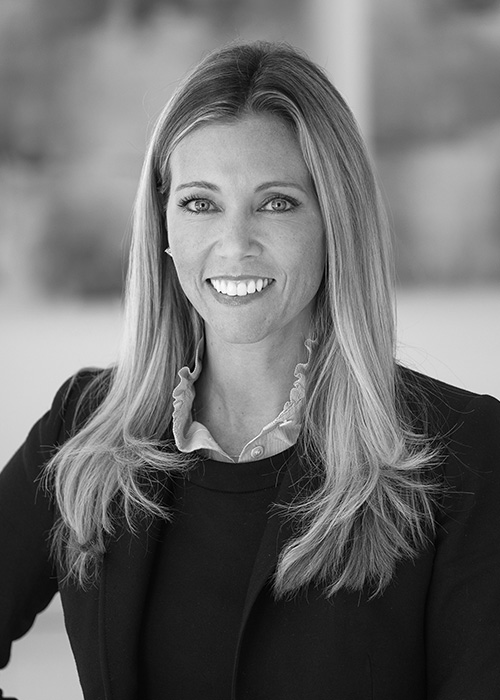 3. Clear Dominance
3. Clear Dominance
JENNIFER OLSON-WILK (new)
Senior Vice President and Managing Director of Doctor-Directed Consumer Channel, Align Technology (makers of the Invisalign system)
San Jose, California
Align Technology is on a substantial upswing, thanks largely to its Invisalign clear alternative to braces—which recently introduced an Invisalign store pilot program spearheaded by Olson-Wilk. Revenue generated by clear aligners surged in the first quarter of 2018 to $385.5 million (a 36.5 percent year-on-year increase) and, for its iTero intraoral scanners, which the company will begin selling in China later this year, revenue surged to $51.4 million, an 84 percent year-on-year increase.
Its growth has come largely from strong Invisalign case volume across all customer channels, as well as iTero scanner sales. First-quarter Invisalign volume growth of 31 percent year-over-year was driven by increased use, including strong teen case growth globally, and expansion of Align’s customer base, which included more than 4,200 new Invisalign-trained doctors worldwide.
Olson-Wilk, 39, oversees the company’s newest consumer marketing efforts, and she’s opening a new front in the race to fix crooked teeth by creating a retail experience for Invisalign treatment. Last November, Align opened its first Invisalign store, in San Francisco. Consumers are scanned and shown a computer simulation of what their smile could look like after straightening their teeth with Invisalign clear aligners; they’re then connected with a local Invisalign dentist for treatment. (Don’t think this move is groundbreaking? Just consider how different dentistry might be had Nobel invested similar resources into creating demand for implants.)
Align’s moves angered SmileDirectClub (SDC), which claimed in a recent lawsuit that an Invisalign store violates a noncompete provision of the companies’ 2016 pact under which Align would provide the online startup with non-Invisalign trays. Align doesn’t seem intimidated: It has opened a second store in San Jose, California, and will open two stores in Maryland and Pennsylvania in early July.
“[The store model] allows consumers to learn about Invisalign treatment in a low-pressure, convenient retail environment,” Olson-Wilk says, “and if they’re interested in treatment, we can do a no-cost digital scan and help them schedule an appointment with a local Invisalign doctor of their choice for in-office treatment.”
Align has a strong first-mover advantage, with ace technology and a brand as recognized as Kleenex or Clorox. There are now more than 100 clear-aligner companies, but Jeffries analyst Brandon Couillard says Align is still the leader: “New entrants will have to be 99 percent equivalent—not just cheaper.” Olson-Wilk intends to see to that.
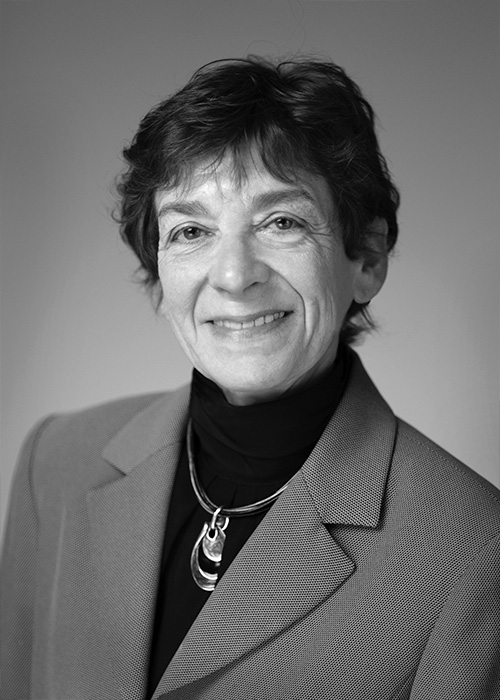 4. The Research Director
4. The Research Director
MARTHA SOMERMAN (last year: 5)
Director, National Institute of Dental and Craniofacial Research • Bethesda, Maryland
Captain America
Who says you can’t get anything done in a federal bureaucracy? Dr. Martha J. Somerman, at the helm of the government’s primary dental-research organization, shows it’s possible.
By Joshua Coe
NOT FAMILIAR WITH the work of Dr. Martha J. Somerman? You’re not alone: She has long made a habit of flying a bit below the radar. Currently the director of the National Institute for Dental and Craniofacial Research, a federal organization that operates under the auspices of the National Institutes of Health, Dr. Somerman, 71—an oral biologist who received her DDS from New York University—oversees a budget of nearly $420 million and wields immense power over the direction and scope of dental research both in the U.S. and abroad.
“In the field of oral biology, she really is a rock star,” says Steve Steinberg, communications director at the University of Washington School of Dentistry in Seattle, who worked closely with Dr. Somerman during her nine-year tenure as its dean. “She’s held in high regard by the research community.” (Dr. Somerman declined to be interviewed for this piece.)
When she would travel overseas for professional conferences, Steinberg remembers, “she was treated like royalty.” A 2011 statement by UW Dental announcing her departure noted that during her time at the helm, the school “consistently ranked in the top tier of dental schools for NIDCR grant funding.”
That was clearly good training, as she’s now on the other side of those financing requests, piloting an organization with more than 400 employees for which her first interaction was as a research fellow in 1980. Today, about three-quarters of NIDCR’s research funding goes toward grants like that: ones made to universities, dental schools, other medical schools and small businesses, almost entirely—but not exclusively—in the United States.
Among the innovations of recent vintage developed by NIDCR-funded scientists have been a new imaging technique “to visualize the multiple layers of bacteria that live on each surface of the oral cavity” (as Dr. Somerman wrote in a budget request in 2016) and a handheld microscope that enables dentists more easily to look for signs of incipient cancer in patients’ mouths.
One recent example of Somerman-directed research is investigations of the effects of e-cigarette chemicals on oral health—a subject of importance amid a burgeoning national debate about vaping. The NIDCR also worked directly with engineers from Oral-B to develop a biometric toothbrush and is currently directing funds toward the development of what it calls “novel strategies to treat chronic dry mouth.”
It’s a varied portfolio, and it doesn’t stop at the water’s edge despite the “N” in NIDCR: Dr. Somerman and her team are currently working with scientists in Panama to develop non-invasive oral methods to detect the Zika virus in pregnant women.
In 2011, the year she became the agency’s director, Dr. Somerman also established the Laboratory of Oral Connective Tissue Biology, which falls under the purview of the National Institute of Arthritis and Musculoskeletal and Skin Diseases, another branch of the NIH.
Praise from her colleagues is universal. “She’s probably the hardest-working person I’ve ever worked with,” says Brian Foster, whose association with Dr. Somerman dates to 2000, when she took him under her wing when she was a research assistant at the University of Michigan. “Even as her administrative responsibilities increased, she’s always been very involved in the research,” adds Foster, who now works as a guest researcher alongside Somerman and her primary team of seven scientists.
In the seven years she has run the NIDCR, Dr. Somerman and her lab have published 28 studies on topics both routine (“Rare Bone Diseases and Their Dental, Oral and Craniofacial Manifestations”) and impossibly arcane (“Periodontitis in Chédiak-Higashi Syndrome”). Her research over the past two decades, Foster notes, has centered on two general themes: How do teeth form, and which minerals help them do so? Many of her group’s studies focus on treatment of hypophosphatasia (HPP), a disease that causes bones to soften—one of whose earliest indicators is the premature loss of one’s baby teeth.
To that end, in 2015, working closely with La Jolla, California–based scientist José Luis Millán, Dr. Somerman’s lab ran tests with mice on Strensiq, an experimental enzyme-based drug, finding that it significantly improved tooth retention. It is currently the only FDA-approved treatment for HPP. This research, Foster says, was a career highlight. “I don’t often get to see real-life human patients benefit from our work so directly,” he says.
The NIDCR gig also comes with responsibilities that are almost promotional, through which Dr. Somerman continues to push for changes in dental health. The biggest project she’s currently championing is “NIDCR 2030,” announced last spring—an initiative intended to “help overcome oral-health disparities and stimulate both prevention and treatment options for people with dental, oral and craniofacial diseases and disorders.” (Separately, the NIDCR is also charged with awarding $1 million in annual funding for eight years to scientists researching “high-risk, high-reward projects” that could “profoundly enhance our understanding of dental, oral and craniofacial diseases and conditions.”)
At the time NIDCR 2030 was announced, the Trump administration was proposing cutting $94 million from the agency’s budget, taking it down to $321 million annually. By the time the White House’s formal 2019 budget was published, however, most of those cuts had been restored, for a net reduction of just $9 million from the previous year. Whatever the reason for the change, it’s Dr. Somerman’s job to see that the money is spent wisely—and, insofar as it’s possible, to ensure that Americans’ dental and overall oral health is insulated from petty political squabbling. As she rounds the corner into her eighth year at the top of the NIDCR, she’s ready to continue wielding that influence. •
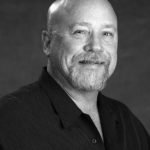 5. The Connector
5. The Connector
HOWARD FARRAN (last year: 3)
Founder, Dentaltown.com, Dentaltown Magazine Phoenix, Arizona
In the 20 years since he launched Dentaltown.com, Dr. Farran (inducted into Incisal Edge’s Innovators Hall of Fame in 2014) has expanded the once-modest digital dental-health forum into an international community of more than 250,000 dentists. Through his umbrella company, Farran Media, Dentaltown has diversified into a multimedia operation that offers online CE courses, a free print magazine, a smartphone app with 60,000 users and more than 60 oral-health podcasts.
Dentists from Phoenix to Florence to Faisalabad alike have learned how to place implants in part by listening to Dentistry Uncensored, a podcast hosted by Farran himself. (His guests have included such 32 Most Influential notables as Stanley Bergman, Marco Gadola, Kathleen O’Loughlin and Dr. Gordon Christensen.)
With nearly three decades of experience in dental-practice management, meanwhile, Dr. Farran has lectured before dental professionals in more than 50 countries. This March, Dentaltown recorded its 5 millionth post, and some 1,500 new users are signing up monthly. Global industry renown hasn’t dented his sense of loyalty, though: Dr. Farran remains teamed up with the five programmers who created the original version of Dentaltown in 1998.
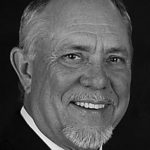 6. The Mad Scientist
6. The Mad Scientist
JIM GLIDEWELL (last year: 17)
President and CEO, Glidewell Laboratories
Newport Beach, California
For nearly 50 years, Glidewell, 73, has operated the world’s largest dental laboratory. He established Glidewell Laboratories in January 1970—after serving in the U.S. Navy during the Vietnam War—and built it into the leading provider of dental lab products and professional services.
Glidewell’s fantasy factory specializes in crowns and bridges, ceramics, removable full and partial dentures, implants, prosthetics and full-cast restorations. Glidewell himself directs the labs’ R&D department, which has invented dozens of materials and lab services: Capture Impression Material, Transition Crowns & Bridges, In-Ceram Zirconia, Silent Nite anti-snoring appliances and much more.
In the last decade, too, Glidewell (the man and the lab) have invested in CAD/CAM technologies, in 2009 releasing BruxZir Solid Zirconia, an enormously successful tooth-colored alternative to PFMs and cast-gold restorations, and a new TS150e chairside milling machine last year. Glidewell, inducted as an inaugural member into Incisal Edge’s Innovator Hall of Fame in 2012, has long been thought of as dentistry’s Willy Wonka—a title he seems unlikely to relinquish anytime soon.
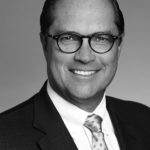 7. (TIE). The Lobbyist
7. (TIE). The Lobbyist
MICHAEL GRAHAM (last year: 9)
Senior Vice President, Government and Public Affairs, American Dental Association • Washington, D.C.
When the Center for Public Integrity ranked the nation’s top lobbyist donation “bundlers” in 2011, just a few spots lower than D.C. super-couple Tony and Heather Podesta was Michael Graham. That year, the ADA’s senior VP of government and public affairs helped direct the $1.2 million the organization spent on federal lobbying, individually “bundling”—that is, organizing and collecting from various donors—some $130,000.
A former commander in the U.S. Navy Reserve, Graham has worked for the ADA for more than two decades and has been its chief lobbyist since 2010, helping dentists achieve political clout far beyond their numbers. Nearly two-thirds of U.S. dentists belong to the ADA, compared with just 25 percent of physicians who belong to the American Medical Association. Of late, the ADA has trained its fire on the dental-therapist bills making their way through U.S. statehouses. Critics charge that the group is using lobbying muscle disproportionate to the perceived potential harm—one way, albeit unintended, of indicating who’s winning.
Graham has also advocated for measures to reduce dental students’ loan burden; the ADA estimates that the average dental-school graduate departs with $287,000 in accumulated debt. Last November, he spoke to the American Dental Education Association to urge students to get behind his efforts; this April, nearly 1,000 students and dentists headed to the nation’s capital for the ADA’s Dentist and Student Lobby Day.
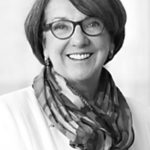 7. (TIE). The National Force
7. (TIE). The National Force
KATHLEEN O’LOUGHLIN (last year: 9)
Executive Director, American Dental Association • Chicago, Illinois
As the executive director of the American Dental Association for the past nine years, O’Loughlin is key to the organization’s efforts to strike a balance between providing services to the traditional dental-practice member (one dentist, a few staffers, a stand-alone business) and the trends shaping dentistry going forward (an aging workforce and patient base, limited access to care, accelerating costs).
In her role overseeing the ADA’s 400-plus employees, O’Loughlin finds few dental issues that don’t fall under her sway, from which official position the group ought to take regarding the opioid epidemic to whether Medicare should include a dental benefit.
She’s also leading by example, insisting that the group shape its services and interact with its 200,000 members in ways that any tech-company chief executive would. “We are trying to be what [ADA members] need and where they need,” she told Dr. Howard Farran (No. 5) on his Dentistry Uncensored podcast in August 2016. “We are trying to keep up with Google and be more Amazon-like in how we serve our members.”
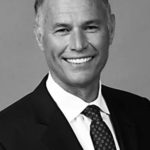 8. Support Provider
8. Support Provider
RICK WORKMAN (last year: 2)
Founder and executive chairman, Heartland Dental
Effingham, Illinois
Dr. Workman is the founder and top executive of the largest U.S. dental support organization (DSO), with more than 11,000 employees across 840 dental offices working to support 1,300 dentists. He founded Heartland in 1997, having been an early advocate for the idea of a company that could handle the business and support responsibilities of running a dental office.
Not long after earning his DMD from Southern Illinois University School of Dental Medicine, Dr. Workman opened two practices in under two years. Although they were in rural Illinois towns with tiny populations, managing them kept him busy more than 80 hours a week.
All his recent work has paid off: In March, Heartland got a new owner with the announcement that private-equity giant KKR & Co. agreed to buy a majority stake in the company from the Ontario Teachers’ Pension Plan. Financial details were not disclosed, but when the Ontario group acquired its own majority stake in 2012, that deal, according to the Wall Street Journal, was valued at more than $1 billion. Heartland says its supported practices reported $1.3 billion in aggregate revenue in 2017.
Dr. Workman will remain chairman of Heartland, and Patrick Bauer will stay on as president and CEO, to help guide the company through what KKR will surely want to be an unprecedented period of growth. Stay tuned.
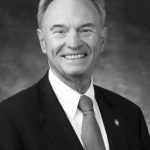 9. Golden State Warrior
9. Golden State Warrior
PETER DUBOIS (last year: 32)
Executive Director, California Dental Association
Sacramento, California
DuBois has been at the apex of the California Dental Association, the country’s largest such state group, for a decade and a half, overseeing strategic planning for the 27,000-member organization and its multiple subsidiaries.
Since DuBois’s tenure as executive director kicked off, the number of Californians with access to fluoridated water has more than doubled—from 32 percent to nearly 70 percent—a decade-long goal of the CDA’s nonprofit charitable foundation. He’s also responsible for overseeing the operations of the group’s Dental Insurance Company, which covers some 18,000 practitioners across the U.S.
The Dentists’ Service Company (TDSC), the CDA’s for-profit arm, recently acquired Arnold Dental Supply, a full-service dental distributor in Washington State. In a move that threatens to upend the traditional dental-distribution channel, DuBois says TDSC will offer below-market prices to CDA members through a new online marketplace—and, hopefully, provide CDA members with an added membership perk.
Strength in numbers, expanding access to care: just another day at the office for the country’s most influential state-based executive.
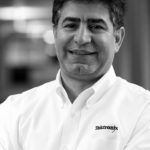 10. The Brand Master
10. The Brand Master
AMIR AGHDAEI (last year: 12)
Group Executive and Vice President, Danaher
Washington, D.C.
Danaher is immense. The conglomerate, which is based in Washington, D.C., but active worldwide, encompasses more than 20 science-and-technology operating companies and 59,000 employees in roughly five dozen countries.
Its remit is large as well, covering diagnostics, life sciences, dental and environmental solutions. As head of the dental division, Aghdaei, 58, oversees a dozen or so key industry brands including KaVo Kerr, Nobel Biocare, Gendex and Pelton & Crane. The companies’ products are legion: dental imaging, X-ray technology, implant systems, orthodontic bracket systems and more.
In July 2015, the company appointed Aghdaei president of Dental Technologies; later the same year he became president of the Danaher Dental Platform. The company overall logged $18.3 billion in sales worldwide in 2017; the dental division was responsible for $2.8 billion of that. There is one pressure point, however: Danaher’s dental division’s earnings have badly trailed those of its other divisions over the last several quarters. Can Aghdaei right the ship? Well, the Dental Platform reaches 99 percent of dental offices around the globe. There’s no doubt that challenges loom—but that’s highly enviable market access as Aghdaei plots his course.
11. The Pugilist
ROBERT FONTANA (new)
CEO, Aspen Dental
East Syracuse, New York
Dental support organizations (see Rick Workman, No. 8, and Steve Thorne, No. 15) have always been disruptive, but for the most part they’ve not been publicly prominent. That might have begun to change last year, when Fontana’s Aspen Dental ran a series of advertisements on TV and the Web touting its less-expensive dentistry.
“I’m being robbed—by a dentist!” a man screams in one ad, in which a doctor intervenes in a bank heist only to be mistaken for the thief. “Nothing new there,” a woman laments as the customers hand over their wallets to the guy in the white lab coat.
The irreverent ads typify the company image Fontana has crafted since he founded Aspen Dental in 1998: cheap, easy care for patients, strong support for dentists—and a bare-knuckle approach to growth. Aspen is now one of the country’s biggest DSOs, with 600 practices and 8,000 dentists across 36 states.
The campaign rankled many. On the American Dental Association’s website, Dr. Matthew Messina, a dentist in Ohio, decried the ads for portraying a maligned “profession as the butt of a joke to try to score points and get new business.”
Aspen’s chief clinical officer, Dr. Arwinder Judge, responded—also at ADA.org—saying the ads confront genuine perceptions head-on and humorously in an attempt to change them. He then added a (not so) subtle dig: “The frequently expressed sentiment that the ADA is not relevant is troubling to me, and it should be to the ADA and its membership as well.” Pass the popcorn? Well, perhaps. This is certainly one battle worth monitoring in the months ahead.
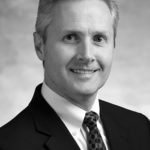 12. P&G’s MVP
12. P&G’s MVP
STEVE BISHOP (last year: 6)
Group President, Procter & Gamble Global Health Care (Including Oral Care)
Cincinnati, Ohio
For more than 175 years, Procter & Gamble has been at the helm of technology innovation in the kinds of packaged consumer goods that are found in just about every home: Tide, Olay, Febreze, Gillette and uncountable others. Bishop, 53, an Indiana native and graduate of Purdue University, has managed the venerable company’s Global Health Care sector—which includes Crest, Oral-B and many more—since 2015. The sector made up 12 percent of Procter & Gamble’s sales in 2017, up substantially since he took the reins.
P&G recently introduced a mobile operating system for its high-tech Oral-B Genius Pro 8000 electric brush, whose development and release were overseen by Bishop. The new system enables people to use Bluetooth connectivity to track their daily brushing and get real-time feedback from its Focused Care feature, which helps a user follow specific brushing instructions given by a dentist. The meeting point of high technology, innovation and the global reach and scale of a company like P&G is a very good place to be—and that’s exactly where you’ll find Steve Bishop.
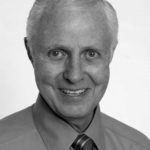 13. The Icon
13. The Icon
GORDON CHRISTENSEN (last year: 11)
Founder and CEO, Practical Clinical Courses
Provo, Utah
Dr. Christensen might be 81, but he shows little sign of slowing down. As head of Practical Clinical Courses and cofounder of the Clinicians Report Foundation, he has been enlightening students and dentists alike for more than four decades, having logged some 50,000 hours of CE classes—via lectures, instructional DVDs, online, even courses taught on cruise ships.
With his wife, Dr. Rella Christensen, a respected dental researcher, Dr. Christensen founded Clinicians Report in 1976. The nonprofit facility’s 40 researchers—augmented by 450 volunteers around the world—test the dental products of more than 750 brands a year, publishing the results monthly.
The indefatigable Dr. Christensen is also a practicing prosthodontist in Provo. “I have no plans to retire,” he told Inside Dentistry in 2011. “If you enjoy dentistry, don’t fully retire—slow down and enjoy it, teach, do research, volunteer.” Among his innumerable contributions to the profession, meanwhile, he can also count his sons, William (a prosthodontist) and Michael (a general practitioner).
14. Insurer of First Resort
TONY BARTH (new)
CEO, Delta Dental
San Francisco, California
Barth heads the country’s largest provider of dental plans, covering 74 million people across all 50 states, the nation’s capital and Puerto Rico. Founded in 1954 by a group of West Coast dentists who formed dental support organizations in California, Oregon and Washington State, the nonprofit group has grown into a sprawling network of 39 member companies representing three-fourths of dentists in the U.S.
Yet while the dental industry itself has been reborn several times since the 1950s by technology advances, new procedures and changing patient and practitioner demographics, most insurance plan maximums haven’t changed much at all, according to a Jeffries analyst note from this February. Topping out at $2,000 to $3,000 per year, the typical dental-insurance plan barely covers the cost of one restoration.
One big issue on Barth’s plate of late was the four-year-old lawsuit between member group Delta Dental of California and the California Dental Association, which Delta recently agreed to settle for $65 million. That sum will be divided among more than 14,000 dentists who submitted fee requests that Delta improperly limited according to an inflation adjustment.
Delta Dental denied the allegations; in a statement, Barth said that the company had “adhered to its contracts” with dentists and complied with all relevant California laws, and was “satisfied to put this litigation behind us.”
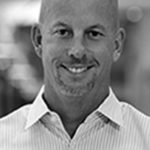 15. Support Stalwart
15. Support Stalwart
STEVE THORNE (last year: 15)
Founder and CEO, Pacific Dental Services
Irvine, California
Another DSO visionary, Thorne founded Pacific Dental in 1994 after realizing he had a knack for supplying tech support to his father’s small group of California-based dental practices. It now supports more than 1,600 dentists at 625 practices across 19 states and says it expects to add another 80 supported offices in 2018.
It’s likely that many of those new clients will be staffed by young dentists. The ADA Health Policy Institute in March 2017 estimated that 7.4 percent of practicing dentists in the U.S. are affiliated with DSOs—“but for new dentists ages 21-34, that number more than doubles, to 16.3 percent.” In Arizona, New Hampshire and Oregon, 30 percent of dentists under 30 are DSO-affiliated.
Thorne has called the business of dentistry “scary” due to increased competition and the seemingly bottomless burden of student debt. “Companies like ours are looking more attractive to young dentists,” he said during one panel discussion covering the HPI’s findings. Between 2015 and 2017, Pacific Dental hired nearly 300 newly minted dental-school grads. “I think we’ve gotten better at helping them get started in practice,” he told the panel. “The debt level is the real issue.”
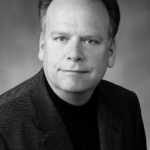 16. Seattle’s Best
16. Seattle’s Best
MICHAEL COHEN (last year: 14)
Founder, Seattle Study Club
Seattle, Washington
When Cohen founded Seattle Study Club in 1993, he did so envisioning a “university without walls” for dentists everywhere. A quarter-century later, SSC has grown into a community not just without walls but without borders, in possession of educational content-licensing agreements as far afield as Germany, China and India.
Cohen is bullish on his company’s future, and it’s not hard to see why. “The trend in continuing education is learning in small groups,” he says, “and that’s pretty much our business.”
SSC boasts more than 7,400 members across 265 education clubs in the U.S. and Canada; it has 19 more in Europe, Asia and Australia. Overseas, it has expanded most rapidly in China, where Cohen expects the number of clubs to more than double, to 15, by the end of the year. In the U.S., the expansion target is roughly 30 to 40 new clubs annually. (Benco Dental, the publisher of Incisal Edge, is a corporate sponsor of Seattle Study Club’s events.)
Last September, SSC hired a new CEO, Mike Gergen, to help it handle rapid growth. For its twenty-fifth-anniversary meeting in Palm Springs, California, in January, Cohen invited 40 industry leaders, expecting a little more than half to show up. “Twenty-five leading clinicians from around the world for 25 years sounded right,” he says.
All 40 accepted. To Cohen, that’s the result of a model that has helped his creation broaden from one small club in the Pacific Northwest. “If you do the right things for people,” he says, “everything else falls into place.”
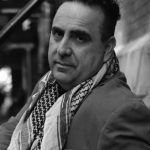 17. The Social Animal
17. The Social Animal
NICHOLAS TOSCANO (new)
Board-Certified Periodontist, Manhattan Periodontal Associates
New York, New York
How does a periodontist—even an accomplished one—become influential? Working in glamorous Gotham doesn’t hurt. A decorated military career is surely a plus. And treating the smiles of the rich, famous and powerful helps as well. That’s Dr. Toscano, and that’s how he amassed, as of press time, 174,000 followers on Instagram (@drtoscanodds)—the biggest social-media fan base, so far as we can tell, of any dentist on earth. (His Twitter following is a relative pittance, at 18,000.)
A Long Island native, Dr. Toscano served 13 years as an active-duty Navy dentist. His career has spanned war and peace—he has received (among others) a National Defense Medal, a Navy Commendation Medal and a Navy Global War on Terror Medal—politics and fashion. Among his famous patients: Bill and Hillary Clinton, George W. and Laura Bush, Harry Reid, Nancy Pelosi, Nicole Kidman, the Real Housewives of New York City, model Helena Christensen and the Victoria’s Secret Angels.
His Instagram feed is an equally motley mix—an agglomeration of vacation and art-gallery photos, selfies with famous patients and, yes, plenty of dentistry, some of it fairly graphic to the eyes of the layman. Victoria’s Secret models are well and good, after all, but you don’t get a six-figure Instagram following without plenty of dental-procedure money shots.
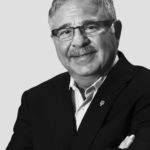 18. Teacher of the Year
18. Teacher of the Year
JOHN KOIS (last year: 20)
Founder and Director, The Kois Center
Seattle, Washington
For more than two decades, the Kois Center has taught advanced graduate lecture and clinical programs for practicing dentists in a nine-course curriculum whose topics range far afield: esthetics, implants, restorative dentistry and more.
Dr. Kois is, by popular acclaim, almost a byword for science-based dental inquiry. “The data from our own research and my literature review and cases,” he says, “provide the content for our annual symposium”—a major industry jamboree now in its twentieth year.
He formerly gave around 50 lectures a year in addition to tending to his two practices in Seattle. Now, though, he has scaled back his speaking engagements to about a half-dozen per annum. “On one hand, [speaking] provides opportunities to meet more dentists,” he says. “On the other hand, with smaller groups, I’m able to figure out what resonates better with dentists. In the long run, it produces an outcome that helps dental care around the world.”
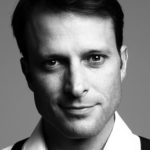 19. The Smile Raconteur
19. The Smile Raconteur
CHRISTIAN COACHMAN (new)
Founder, Digital Smile Design
Miami, Florida
“Is your business future-ready?” sounds like a query delivered by a certain kind of Californian who lives in a yurt and eats unpronounceable grains. It’s also the first line of introduction to Digital Smile Design, a business that provides digital consulting and devices for esthetic . . . well, smile design.
Founded by Dr. Coachman in 2007, DSD aims to help doctors who run their own practice establish a diagnosis-to-execution protocol to connect with their patients and eliminate costly inefficiencies.
Dr. Coachman is a character: From São Paulo, Brazil, he’s a sixth-generation dentist whose clan has appeared in the Guinness Book of World Records as “the oldest family dedicated to dentistry worldwide.” As the founder of a company that does technology consultations, continuing education and even killer-app development, he has become a white-hot leader in state-of-the-art smile design, esthetic dentistry and oral rehabilitation. “I’m a big dreamer,” he says, explaining his passion for dentistry. “I’m always looking toward the future. Always observing, listening and trying to understand why things are the way they are.”
20. The Analyst
ED SNYDER (last year: 27)
Managing Director, Northcoast Research
Cleveland, Ohio
With more than a quarter-century covering the dental industry under his belt (or under his maxillary incisors, we guess), Snyder might well be the longest-tenured dental equity analyst working today. He’s without doubt the most influential, serving the top 200 money managers in the U.S., including Wellington, Fidelity and BlackRock.
Snyder doesn’t merely focus on large public companies, though, digging into the industry’s grassroots and meeting with the middle and regional managers and product specialists of dental-tool suppliers and examining their distribution facilities. His network includes hundreds of manufacturers, distributors and privately held labs, and he actively tracks more than 17,000 orthodontists and general dentists monthly.
Through his network of labs, meanwhile, Snyder is able to track and publish notes on the expansion and contraction of more than 40,000 dental practices. In 2016, he won the Thomson Reuters Analyst Award as the top earnings estimator in Health Care Equipment and Supplies. You need insider info? He’s got insider info.
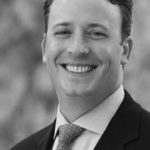 21. The Helping Hand
21. The Helping Hand
ANTON WOOLF (new)
CEO, Argen
San Diego, California
Think of Woolf, 41, as the champion of the small lab. Dental laboratories are going through a period of significant consolidation: There were roughly 9,100 of them in the U.S. last year, down 37 percent from 1990. In a recent survey by the National Association of Dental Laboratories, more than a quarter of lab owners said they intend to sell to a third party when they retire; their average age is 52. The retirement tidal wave is expected to crest around 2030.
Profit margins are typically around 14 percent, which has led many labs to enlist outsourcing partners such as Argen to trim costs where they can. Founded in South Africa by Woolf’s parents, the company has transformed under his leadership from being known primarily as the largest dental-alloy manufacturer to becoming a leading outsourcing center for small labs to print and mill restorations.
The business operates around 100 3Shape scanners, Selective Laser Melting machines, milling machines and wax and model printers, among much else, at its San Diego headquarters. The digital devices labs now need are pricey, beyond the reach of some smaller fry—who thus upload scans to Argen’s system and receive wax or SLM units two days hence.
At a recent industry conference, Woolf described Argen’s role as forging “technologies available to labs of all sizes, becoming a partner in their success.” Looking out for the little guy, it seems, has become big business.
22. The Dealmaker
DEWEY MARTINELLI (new)
Managing Director for Health Care, William Blair • Chicago, Illinois
One of the most active investment bankers in the oral-health sector, Martinelli has been the point man behind many of the industry’s deals in recent years. In 2016, he managed the sale of Great Expressions Dental Centers to the Atlanta-based private-equity firm Roark Capital Group; the next year, Martinelli’s Chicago-based team handled the sale of dental consumables business Young Innovations to another PE firm, the Jordan Company. (Neither deal’s financial terms were disclosed.)
Martinelli also works alongside Fritz Buerger, who served as lead banker on the sale of Texas-based orthodontic company Smile Doctors to Linden Capital Partners last year. It was a banner year all around for William Blair, which also advised on the $825 million acquisition of floss and mouthguard makers DenTek and EZO Dental Cushions. Mergers & Acquisitions magazine named William Blair its Investment Bank of the Year in 2017, citing the firm’s expertise and sector experts like Martinelli.
23. The Renaissance Educator
FRANK SPEAR (new)
Founder and Director, Spear Education
Scottsdale, Arizona; Seattle, Washington
Simply put, Dr. Spear, 65, is one of dentistry’s most respected clinicians and educators. In 1994, he founded the Seattle Institute of Advanced Dental Education, which in 2008 he renamed Spear Education and expanded to a larger campus in Scottsdale, Arizona.
The center specializes in clinical and technical workshops for practicing dentists, technicians and their staffs, delivered via DVDs, workshops and live-patient courses covering a vast range of topics: treating terminal dentition, esthetics, sleep medicine and many others. Spear seminars consist of two days of dental theory and live presentations; workshops are taught in classrooms with hands-on application.
Aside from tending to his own private practice in Seattle, where he specializes in comprehensive restorative and esthetic dentistry, he lectures on interdisciplinary dentistry throughout North America, Europe and Asia. As part of his newest venture, Dr. Spear last November published Case Acceptance in the Modern Dental Practice: Break Down Barriers, Increase Referrals and Boost Patient Satisfaction, in which he uses examples from his own practice to illustrate how other dentists can best operate theirs. He’s also an affiliate professor in the graduate prosthodontics program at the University of Washington.
24. The Law
FEDERAL TRADE COMMISSIONERS (new)
U.S. Federal Trade Commission
Washington, D.C.
In February, the Federal Trade Commission filed a first-of-its-kind lawsuit against the United States’ three largest dental-supply companies: Henry Schein, Patterson Companies and Benco Dental (the publisher of Incisal Edge). The FTC accuses the companies of violating U.S. antitrust laws by conspiring to refuse to sell or give discounts to certain dental purchasing groups. The administrative trial is scheduled for late 2018.
25. The Independent
JOHN GULON (new)
Managing Partner, Park Dental
Eden Prairie, Minnesota
Like a partner in a law firm, a dentist at Park Dental partially owns and has a say in the running of the practice—a rare example of an employee-owned business in a segment of dentistry dominated by large practices and DSOs operated by corporations or private-equity firms. Dr. Gulon, a Park Dental clinician since 1987 and its president since 2005, was a big part of securing that independence.
In the mid-1990s, Park Dental was acquired by American Dental Partners, a Massachusetts-based publicly traded dental practice-management company. The tie-up went smoothly, with most of Park Dental’s administrative processes outsourced to American Dental—until 2006, when the former sued the latter, accusing American of overstepping its legal authority and interfering in care delivery by blocking dentists’ access to funds, among other things. Park Dental’s dentists argued that American was meddling in appointment scheduling, handling patient complaints and withholding money for new equipment—behavior they argued was tantamount to non-dentists delivering the administration of dentistry.
Park dentists won their suit and were awarded $130.6 million in 2007; the two parties later reached an agreement in lieu of that judgment for Park to buy back its clinics for $19 million. That settlement, Dr. Gulon later told the ADA, was in keeping with Park’s mission of people before profits: “Our culture, value system and key processes are aligned to ensure consistency across every practice location. We are patient-centered in all decisions and all actions.”
26. The Intrepid Investigator
MARY OTTO (new)
Journalist; Author of Teeth
Washington, D.C.
Otto’s 2007 coverage in the Washington Post of a boy’s death from an infected tooth was the start of what would become an in-depth examination of oral health and inequality. Her searing three-page Post feature began, “Twelve-year-old Deamonte Driver died of a toothache Sunday. A routine $80 tooth extraction might have saved him. If his mother had been insured. If his family had not lost its Medicaid. If Medicaid dentists weren’t so hard to find. . . . By the time Deamonte’s aching tooth got any attention, the bacteria from the abscess had spread to his brain.”
In its glowing review, the New York Times called Otto’s tome “a call for sweeping, radical change.”
Otto left the Post in 2008, later becoming a Harvard Knight Science Journalism fellow. Her research into how dentistry’s development split it from the rest of medicine—thought of in the public mind as cosmetic, not critical to health—turned into her 2017 book, Teeth: The Story of Beauty, Inequality and the Struggle for Oral Health in America. The tome highlights data linking tooth decay to poor job prospects and lower social mobility, evidence Otto presents alongside interviews with, among others, a consultant who coaches dentists on how to up-sell patients on services and hold off those on Medicaid. In its glowing review, the New York Times called Otto’s tome “a call for sweeping, radical change.”
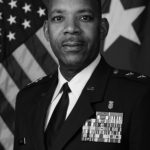 27. Duty-Bound
27. Duty-Bound
MAJOR GENERAL DR. ROOSEVELT ALLEN (last year: 31)
Chief of Dental Care, United States Air Force
Falls Church, Virginia
The influence this list returnee exerts has gotten only more substantial in the past year. A military dentist in one capacity or another since 1986, Major General Allen helps craft Air Force health (and health-care-delivery) policy for a service with some 1,000 dentists and 2,500 technicians of various stripes.
He received his DDS from Howard University in Washington, D.C., and did his residency in general dentistry at the 59th Medical Wing at Lackland Air Force Base in Texas. Since then, his responsibilities have only grown; he’s now in charge of health policy for 44,000 personnel and 75 treatment facilities worldwide, overseeing a department budget of $6.4 billion. The passing geopolitics of the moment aside, it’s a good bet that for the foreseeable future the U.S. will maintain a substantial military footprint (and, er, toothprint) around the globe. It’s an equally good bet that Major General Allen will be there, helping make it all happen.
28. Moving Fast, Breaking Things
MICHAEL SCANDRETT (new)
Executive Director, Minnesota Health Care Safety Net Coalition
Minneapolis, Minnesota
With legislation regarding dental therapists—a controversial topic, to say the least—now on the table in 11 states, the unsung hero behind the efforts to permit them, whatever your opinion thereof, exerts unquestionable influence.
As executive director of the nonprofit Minnesota Health Care Safety Net Coalition—operating out of the Gopher State, which has long been on the frontlines of the dental-therapist battle—Scandrett, 64, has organized proposals and coordinated lobbying efforts in statehouses around the country.
Although dental therapists are permitted in some form in 50 countries—Canada, the U.K. and New Zealand among them—they’re still virtually nonexistent in the U.S., with a program in the Native Alaskan community the longtime only exception. In 2008, Scandrett’s coalition—he has been its executive director since 2006—proposed a hybrid of the Alaskan and Canadian models. In 2009, with support from then–Minnesota State Senator Anne Lynch, the country’s first bill authorizing the profession passed. The first dental therapist was licensed two years later, and nearly 90 now practice in underserved communities throughout Minnesota. (Legislatures in Maine and Vermont have since passed similar bills; Massachusetts, Arizona and Ohio are likely up next.)
In addition to his role with MHCSNC, Scandrett is president of MS Strategies, which provides “legal and consulting services to Minnesota’s health-care safety-net community.” Dental therapy has many passionate advocates. None is remotely as influential as Scandrett.
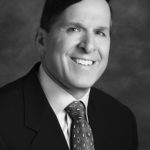 29. Teacher Man
29. Teacher Man
ROGER LEVIN (last year: 29)
Founder and CEO, The Levin Group • Owings Mills, Maryland
A third-generation dentist, Levin knows firsthand that many elements of operating a successful practice aren’t taught in dental school. That’s why in 1985, 10 years after graduating from the University of Maryland and joining his father’s practice in Baltimore, he founded Healthcare Advancements—renamed the Levin Group in 1991—to help advise dentists about how to run their business.
Today, the group’s headquarters in Owings Mills, Maryland, features state-of-the-art learning labs to which thousands of dentists and practice teams come to learn about advanced management and marketing methods and attend more than 80 educational seminars and workshops. “We teach leading-edge business strategies based on research so dentists can concentrate on dentistry,” he says.
Earlier this year, meanwhile, Levin launched Dental Business Study Clubs (dbsclubs.com) to supply the Levin Group’s expertise and array of educational content online. “We’ll tackle critical business topics every month that dentists can implement in their practice,” he says. Courses will include online marketing, patient retention, team skill-set enhancement, insurance, adding new dental services and more.
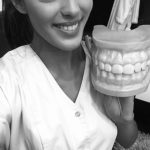 30. Ready for her Closeup
30. Ready for her Closeup
IRIS MITTENAERE (new)
Miss Universe 2016
Lille, France
Ever since she was young, Mittenaere, a French native, has longed to help others through dentistry. And since she was crowned Miss Universe 2016 in January 2017, she has promoted oral health, her voice amplified by the globally audible microphone she has been able to wield.
More than 5 million viewers tuned in to last year’s pageant to watch the fifth-year dental student strut onstage with a confident smile. The focus of her platform: to raise awareness of the “health issues that neglecting dental care can lead to, including respiratory and cardiovascular disease.” She continues to advocate for better oral health via Twitter (@IrisMittenaereO), using the platform to remind her 91,000 followers to brush, floss and see their dentist twice a year.
This year, Mittenaere, 25, expects to complete her studies at the Lille 2 University of Health and Law in Lille, France, were she’s one of the school’s 90 student fellows. She aspires to become a dental surgeon, she says. The universe, it would seem, is hers for the taking.
31. Mr. Mobile
JUSTIN JOFFE (new)
Founder and CEO, Henry the Dentist
Livingston, New Jersey
Whenever the Uberization of Everything finally makes an impact on—sorry, “disrupts”—our humble profession, it’s a good bet Joffe will have had something to do with it. He’s the visionary behind one of the first for-profit, exclusively mobile dental companies, Henry the Dentist.
Not a dentist himself, Joffe graduated from Harvard Business School with a penchant for building successful brands—most recently he was CEO of the multibrand beauty-service organization Hudson Blvd Group—and created Henry in 2016 to increase access to care by working with companies to bring a clinic to their offices. An in-network dental team focuses on both prevention and restoration, working with each employer’s insurance plan. (Henry serves only New Jersey now; nationwide expansion begins next year with Connecticut, Pennsylvania and New York.)
“Our biggest value proposition is that we give companies the ability to provide workers with health and wellness perks.”
“Our biggest value proposition is that we give companies the ability to provide [workers] with health and wellness perks while also increasing employee productivity. It’s a win-win,” Joffe says. Technical limitations? Seemingly none, though Henry will occasionally refer patients to oral surgeons or specialists if they’re in need of advanced dental care. “Our biggest focus will always be on patient care and experience,” he adds. “We take it upon ourselves to help patients navigate through their insurance policies, and we rebook them at a cadence that they’re covered for. We turn what could’ve been a four-hour trip to the dentist using their PTO into a one-hour experience during their lunch hour.”
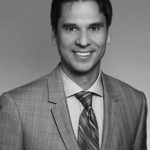 32. The Futurist
32. The Futurist
MARKO VUJICIC (new)
Chief Economist and Vice President, American Dental Association Health Policy Institute
Chicago, Illinois
If demography is destiny, Marko Vujicic might be the scorekeeper. He’s tasked with overseeing research at the ADA’s Health Policy Institute, its think tank, which collects and analyzes data on subjects such as dental-care spending, breadth of use and ease of access.
An Elon Musk type, Marko Vujicic has referred to himself and his team as ‘a group of futurists.’
His credentials are sterling: Formerly of the World Bank and World Health Organization, where he held senior-economist positions, Vujicic is an Elon Musk type who has referred to himself and his team as “a group of futurists.” What does he predict? The slow decline in the percentage of dentists in solo practices will continue, he posits, alongside a slow but steady increase of doctors in dental support organizations and other large-practice models. He also projects an increase in dental-care use among children and high-income seniors, but sluggish growth among working-age adults.
Dental spending is on the rise overall, driven by money from Medicaid and the Children’s Health Insurance Program (CHIP). Emergency-room visits for dental care are headed up, with Medicaid the top payer for such trips. As for the good news, Vujicic says the industry will see more dentists per capita nationwide, and greater numbers of young dentists. The average age of U.S. dentists declined year over year for the first time—ever—in 2017. Whatever lies ahead, Vujicic will be tallying, analyzing and forecasting it.
Three to Watch
A trio of influential corner-office comers to keep your eyeteeth on in the year ahead.
MARK WALCHIRK
CEO, Patterson Companies
DON CASEY
CEO, Dentsply Sirona
SEBASTIAN ARANA
CEO, 3M Dental
REMEMBER WHEN the dental industry was a little . . . sleepy? Like it had perhaps snuggled up a bit too close to the nitrous tube? Those days have gone the way of wooden dentures. For the three leaders above—all of them recent implants, so to speak, all of them running public companies—the pressure is on, the markets are waiting and the grace period for the executive at the top is shorter than ever.
Dentistry, for better or worse, now operates at the same warp speed that characterizes a multitude of industries, particularly those whose primary companies are subject to shareholders’ withering discipline. Henry Schein chief executive Stanley Bergman (No. 1 on this year’s list), at the helm since 1989, has become very much the outlier.
Walchirk has been charged with turning around Patterson’s recent decline in dental revenue, while Casey tries to impose order on a troubled merger. 3M Dental’s Arana, for his part, has a gigantic lab coat to fill: He replaces former CEO James Ingebrand (No. 18 on last year’s list), a 3M lifer who retired in April. Can these three handle the heat? We’re all about to find out.
Where Are The Deans?
Academics’ sway within the dental industry was once unassailable. That’s no longer the case.
STAKING THEIR CLAIM on last year’s inaugural 32 Most Influential list were two dental-school deans: Nova Southeastern’s Dr. Linda Niessen (No. 22) and the Arizona School of Dentistry & Oral Health’s Dr. Jack Dillenberg (No. 26). This year: zero.
Incisal Edge intends no slight to Drs. Niessen and Dillenberg—both are still doing yeomanlike work at their respective schools. But our read is that, as a group, dental deans just aren’t influencing dentistry today the way they did for decades. In the past, academics were key thinkers with great influence on industry trends: They trained future practitioners, held an exalted status within their institutions and set the national agenda.
Today, though, deans across the country seem vaguely inert, moving at their own staid pace even as the speed of dentistry has accelerated furiously. Why, exactly? Says one longtime dental academic, who requested anonymity to speak freely: “About 15 years ago, dental schools [came to] a fork in the road to have two different types of school. The divergence came when we started to see dental schools pop up based on a model of access to care—your faculty is then heavily based on clinicians. No research, no scholarly work.”
Students’ motivation is key as well. “Twenty years ago, if you asked, ‘Why did you pick dentistry?’, they’d say ‘I want to take care of people,’ ” this academic says. “Today, what scores higher is ‘I want a good-paying job with regular hours.’ ” You can’t fault deans and their young charges for focusing on the bottom line. But increasingly, the battle for dental-school influence between scholarship and pure practicality is being won by the latter.
From Number One to Number None?
Last year, former Dentsply Sirona CEO Jeffrey Slovin topped our inaugural list of the 32 Most Influential People in Dentistry. Now he’s out of a job—and out of our ranking entirely. What happened?
By Mellanie Perez
IN FEBRUARY 2016, Jeffrey Slovin, it seemed, was on top of the world. The new CEO of Dentsply Sirona, Slovin had taken the helm of the world’s largest manufacturer of dental products and equipment. It had been a frenetic few months. Slovin, previously the head of Sirona Dental Systems, headquartered in York, Pennsylvania, had been seeking a strategic partner with which to execute the classic “razor/razor blade” business model—in which a dependent good is sold at an attractive cost in order to increase sales of a complementary good.
On the last day of February 2016—February 29; it was a leap year—Slovin cemented a deal with Dentsply International CEO Bret Wise to unite the two publicly traded companies in what the business press deemed a merger of equals—two firms of roughly equivalent size coming together for the ostensible benefit of both. The all-stock tie-up had Dentsply officially acquiring Sirona in a deal worth about $14.5 billion.
Never before had major dental manufacturers attempted to unite equipment (Sirona) and consumables (Dentsply) under one management structure and—fatefully—one corporate culture. The stakes were high, both for dentistry itself and those in each camp: The combined company would employ more than 16,000 people worldwide, including 600 top scientists. Annual aggregate sales topped $4 billion. (The merged unit would assume Dentsply’s Nasdaq ticker symbol, the evocative XRAY—ironic given that Dentsply hadn’t manufactured any imaging equipment since it sold its unit to Danaher in 2003. Merging with Sirona put it back in the imaging business, giving the ticker symbol salience anew.)
What got done in February 2016 came badly undone almost 19 months later, on September 27, 2017. After a year and a half of serving as CEO, three years as Sirona CEO before that and seven years as Sirona’s president, Slovin—along with Bret Wise (who was the united company’s executive chairman) and president Christopher Clark—was terminated without cause by the company’s board. Dentsply Sirona, an industry titan with a market capitalization near $15 billion, had ousted its top three leaders together.
The “Games of Thrones”–style coup was a shocking denouement. In early 2017, Incisal Edge published its inaugural ranking of the 32 Most Influential People in Dentistry, with Slovin at the head of the list. “Slovin’s taking his new role in stride,” we wrote, “calling the company’s immensity . . . ‘a huge responsibility, but also a great opportunity.’ ”
Well, that was then. When the agreement to merge was announced in September 2015, Sirona was growing, albeit fitfully. The combination would create a company with unequaled market heft, scale and financial strength. “Combining the largest consumables company with the largest equipment company held a lot of promise,” says Brandon Couillard, a senior analyst in health-care equity research at Jefferies in Nashville, Tennessee. “In my view, it was uniquely positioned to capitalize on integrated solutions across all [areas] of dentistry in a way no other product manufacturer could.”
Yet the merger soon began to run into trouble. Bearish analysts scored Dentsply for supposedly overpaying; David Trainer of New Constructs, an investment-research firm, calculated that the combined company would need to generate about $650 million of additional after-tax profit just for the acquisition to have achieved, in Trainer’s view, value neutrality.
In November 2016, meanwhile, Patterson Dental, the major dental-supply company out of St. Paul, Minnesota, announced it would not extend its exclusive distribution deal with Dentsply Sirona after its contractual expiration in—fateful month—September 2017. This took a protracted toll on revenue growth, as potential customers now had to weigh not only what to buy, but from whom to buy it. “That had the effect of freezing the market, in the sense that a lot of dentists waited to make their purchasing decisions to see what kind of deal [Henry] Schein would have to offer,” says Couillard, referring to the Melville, New York–based health-care-product distributor led for decades by Stanley Bergman, who took the top spot on our 32 Most Influential list this year, up from No. 4 on the 2017 ranking.
“The disruption [the Patterson news] caused in the marketplace hurt end-user sales performance of Sirona equipment, and negatively [affected Dentsply’s] results,” says Northcoast Research’s Ed Snyder, a Cleveland-based industry watcher who ranks No. 20 on this year’s list. “The company is still feeling the negative impact.”
Last August, Dentsply Sirona lowered its full-year earnings guidance to investors and reported quarterly revenue numbers that missed analysts’ estimates. “Our second-quarter results did not meet our expectations,” Slovin said on the company’s earnings call, later adding, “our integration efforts, while necessary to transform our business, have not been fully implemented and are continuing to affect our execution.” The company reported a second-quarter net loss of $1.05 billion, citing a one-time $1.09 billion “goodwill impairment charge”—a retrenchment of unduly optimistic assessments of various products’ fair-market value, in essence. XRAY shares fell 5.2 percent in afternoon trading.
Later that same evening, the company revealed in a regulatory filing that it was cooperating with a Securities & Exchange Commission investigation regarding its accounting and disclosures of transactions with “a significant distributor.” Sagging revenue, acknowledged merger headaches and now a regulatory probe: Within weeks, Slovin, Wise and Clark were shown the door.
After the trio’s departure, Dentsply Sirona was quick to issue a statement noting that the changes at the top were not related to any problems regarding the company’s financial disclosures. (The SEC inquiry is ongoing.)
Couillard speculates that the indecision that paralyzed many Dentsply Sirona customers was having the same effect on the company itself. “To have Wise, who was Dentsply’s CEO, become executive chairman of the board, and to have Slovin become CEO of the new combined company was perhaps suitable at the outset,” he says. “In reality, it slowed decision-making, because both leaders to some extent were protecting their legacy interest.
“The company had talked about its cost-synergy target of $125 million, and 18 months in, they had barely begun to realize any of that,” Couillard continues. “They evaluated the same plans, and in the end nothing got done—so the board decided it needed to make a significant change.”
Northcoast’s Snyder cites an old chestnut of troubled marriages: The parties just weren’t alike enough to blend. “The combined organization was plagued by significant differences in corporate culture,” he says. “Sirona was known for product innovation. Stand-alone [Dentsply], prior to the merger, was not a very innovative company.”
After defenestrating the threesome, Dentsply Sirona hired Mark Thierer, previously chief executive of pharmacy-benefit manager OptumRx, as interim CEO. Changes to company bylaws—eliminating the supermajority requirement that two-thirds of the board needed to approve any significant change, and increasing the board from nine directors to a dozen—were also made. (Post-merger rumors held that the supermajority requirement was an enormous impediment to high-level decision making, as it necessitated that board members loyal to one faction or the other “cross the line” on big decisions—easier conceived than achieved.) Thierer didn’t last long in the interim slot: This February, the company appointed Donald Casey Jr., previously the head of health-care distributor Cardinal Health, as the new CEO.
Casey’s plans are ambitious; he has spearheaded several acquisitions, including of Orametrix (3D technology for orthodontic care) and RTD, the leader in endodontic posts. In Dentsply Sirona’s 2017 annual report, published this March, he acknowledged the integration difficulties, outlining his ambition for growth resting on three pillars: salesforce effectiveness, faster innovation and boosting performance in developing countries. “There’s a lot of work to be done,” Couillard says, “but I think the combined company can [still] deliver value to dentists despite the early challenges.”
Slovin has kept a low profile since being ousted; he did not respond to requests for comment. Is he troubled by his fall from the heights of Incisal Edge’s 32 Most Influential list? Maybe not, though there are signs he wishes he hadn’t tumbled quite so far. His LinkedIn profile still lists him as “CEO, Dentsply Sirona.” Further down, under “Experience,” the top item reads, almost plaintively, “Chief Executive Officer, Dentsply Sirona Feb 2016–Sep 2017. 1 yr, 8 mos.”



